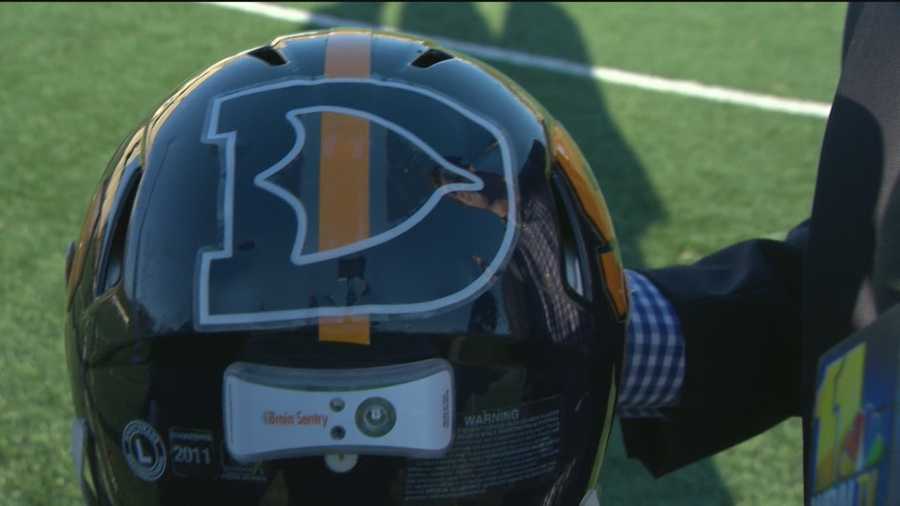Concussion-sensing helmets help HS football All-Stars
All-Star football game, other sports to use helmets to increase safety
Organizers of a weekend high school football all-star game are thinking safety first when it comes to reducing the risk of concussions on the field.
Mobile users tap here for video
They're trying to put that thought into action by having every player wear helmet sensors when they take the field.
Top football players from 74 high schools across the state will meet on the field for the Baltimore Touchdown Club's Senior All-Star Football Classic. Like players did last year, every teammate will wear helmets equipped with sensors to help detect hits that could indicate a risk factor for concussion.
"We know that there are two risk factors for a concussion: Getting hit hard in the head, and taking frequent hits in the head," said Mike Edison, the national sales director at Brain Sentry, the company that makes the sensors. "So, not only are we helping identify those really big hits that are considered a risk factor for a concussion, but we're also looking at the average hits over time and what effect that's having on players."
The sensors are being used on football, hockey and lacrosse helmets from youth to college teams across the country. If a player takes a hit to the head, a red light will go off, alerting coaches and athletic trainers.
"There's no on and off button. We know that players are trying to turn them off. They're trying to hide concussion-like symptoms sometimes so they can stay in the game," Edison said.
"In last year's game, we had an offensive lineman engaged with a defensive lineman. He was bull-rushed to the back and fell and struck his head on the ground, and when he did that, the sensor immediately indicated red," said Scott Ripley, the vice president of the Baltimore Touchdown Club.
He said all 112 players will be equipped with the sensors. Ripley said with the growing emphasis on concussion detection, it's all about safety.
St. Paul's School seniors Garrett Mullin and Anthony Pino agreed.
"With everything going on about concussions nowadays, it's a good way to have something that can help detect it," said Mullin, a center.
"I think these can help prevent a lot of concussions and help give signals to detect concussions so someone's not playing with a concussion and further damaging themselves," said Pino, who plays in the quarterback position.
"Most kids won't play in the NFL, so they need to protect themselves for their future in life," Ripley said.


